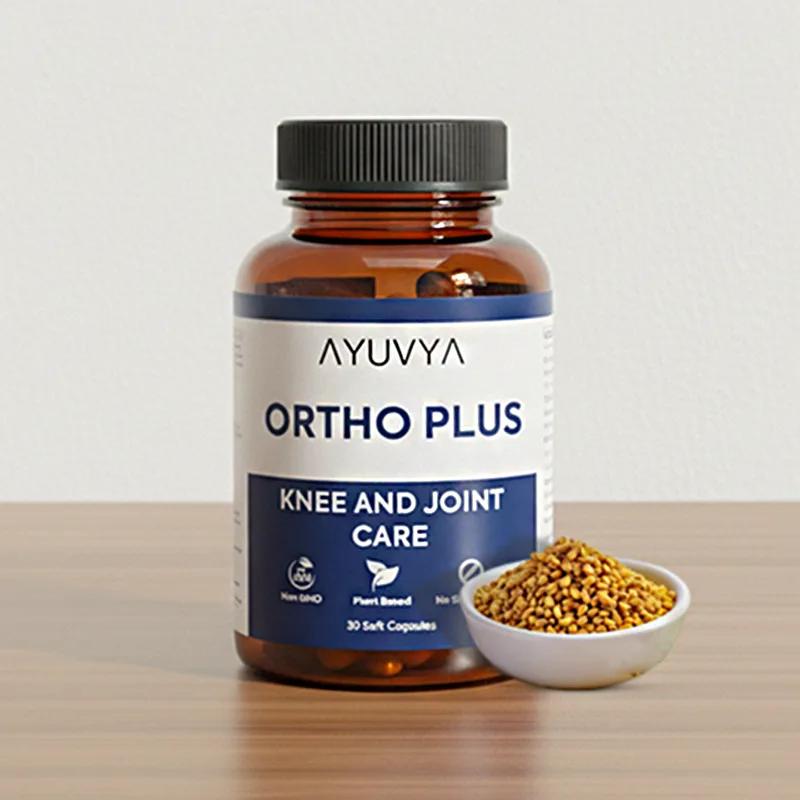Exploring Dashmool Kwath Benefits: Your Guide to Its Healing Properties and Uses
Jul 19, 2024

Dashmool Kwath is a blend of ten Ayurvedic herbs used to address various health issues, including lower back pain, fever, and respiratory problems. The term "Dashmool" translates to ‘Ten Roots’.
Table of Contents:
- Dashmool Kwath Ingredients - 10 Integral Roots
- Ayurvedic Significance of Dashmool Kwath
- 5 Key Dashmoola Kwath Benefits
- How to Use Dashmool Kwath
- Conclusion
- FAQs
Dashamoola is a powerful herbal blend consisting of ten dried roots from various plants, highly valued in Ayurvedic medicine for its extensive health benefits.
Dashamoola kwath offers extensive benefits in Ayurvedic medicine, addressing pain disorders like osteoarthritis and rheumatoid arthritis, and utilized as an enema. It supports weight loss by improving digestion and metabolism, alleviating constipation, abdominal issues, and inflammation.
Dashamoola's properties, including expectorant and nervine effects, aid in conditions such as tremors, sciatica, and respiratory ailments like coughs and asthma. With its ability to balance Vata doshas, it treats nervine disorders and enhances overall wellness.
Dashamoola kwath remains pivotal in holistic health, providing natural remedies for various health challenges and reinforcing its significance in Ayurvedic practices today.
Dashmool Kwath Ingredients - 10 Integral Roots
This remarkable blend features ten exceptional Ayurvedic roots, each possessing unique properties. It includes the five Brihat Panchamoola roots—Bilva, Agnimantha, Kashmari, Shyonaka, and Patala—sourced from large trees, as well as the five Laghu Panchamoola roots—Sarivan, Kantakari, Shalaparni, Prishniparni, and Gokhru, which come from smaller shrubs.
Traditionally, Dashamoola was available only as a powder (churna) made from these ten roots. However, with advancements in technology and the specific needs of individuals, the health benefits of these roots are now offered in various easily consumable forms, including arishtams (aqueous preparations), kwatha (decoction), vatis (tablets), kalpa (paste), tailam (oil), and even ghritam (jam-like formulations). The dashmool kadha benefits are particularly highlighted in these newer preparations, making them accessible for everyday use.
Overall, the dashmool kadha benefits underscore the versatility and effectiveness of this unique herbal blend, contributing to holistic health and well-being.
AYURVEDIC SIGNIFICANCE OF DASHMOOL KWATH
The dashmool benefits are widely recognized, and Dashmoola is generally viewed as a blend of Brihat Panchamoola and Laghu Panchamoola.
Among these ten roots, five are sourced from trees, known as Brihat Panchamoola, while the other five come from shrubs, referred to as Laghu Panchamoola. The roots in Brihat Panchamoola include Bilva, Gambhari, Agnimantha, Patala, and Shyonaka, whereas the roots in Laghu Panchamoola are Brahati, Gokharu, Kantakari, Prishniparni, and Shalaparni.
This combination of ten roots is widely utilised in Ayurveda, effectively acting on the Vata dosha and helping to reduce its aggravation. The dashmool benefits extend to various ailments affecting nerves, muscles, bones, and joints. Additionally, dashmool kwath for periods is commonly used to alleviate menstrual discomfort and support overall reproductive health. Dashmoola possesses potent anti-inflammatory, antioxidant, and analgesic properties, contributing to its effectiveness.
In Ayurvedic medicine, this polyherbal combination is a common ingredient in many formulations used to treat various conditions, especially Vata Roga.
The health benefits of Dashmoola are extensive, and the dashmool benefits specifically address major issues such as arthritis, asthma, headaches, puerperal problems, Parkinson's disease, gout, muscle spasms, and lower back pain. Overall, the dashmool benefits make it a vital component of traditional healing practices.
5 Key Dashmoola Kwath Benefits
1. Supports Respiratory Health
Dashamoola is effective in preventing and alleviating respiratory issues. It's dashmoola kwath uses include reducing inflammation in the chest and airways, helping with conditions like asthma and cough.
2. Alleviates Migraine Discomfort
If you experience migraines accompanied by nausea, vomiting, or gastrointestinal distress, the blend of ten roots in Dashamoola can provide significant relief. These are some of the important dashmoola kwath uses for managing discomfort.
3. Aids in Fever Management
Dashamoola serves as an excellent remedy for both intermittent and high fevers, assisting in the regulation of body temperature. Understanding the dashmoola kwath uses can help in effectively managing fevers.
4. Enhances Digestive Health
This herbal formulation helps alleviate various digestive troubles, including gas formation, and is also beneficial for managing food allergies at home. The diverse dashmoola kwath uses make it a valuable addition to any health regimen.
5. Relieves Arthritis Symptoms
Dashamoola is a potent solution for addressing arthritis-related issues such as pain, swelling, and inflammation, while also promoting overall muscle health.
HOW TO USE DASHMOOL KWATH
Start by thoroughly washing the herbal ingredients and drying them completely to eliminate any moisture. This is an important step to ensure the effectiveness of the dashmool Kwath uses.
Next, grind the herbs into a fine powder and sieve the mixture to remove impurities and solid particles. This preparation method enhances the quality of the dashmool Kwath uses.
Combine all the powdered roots in a large container. Expose the mixture to direct sunlight again for additional drying, which further prepares it for the various dashmool Kwath uses.
Store the final product in glass jars in a cool, dry location for future use. The appropriate therapeutic dosage may differ from individual to individual, depending on factors such as age, severity of the condition, and overall health. It’s essential to consult an Ayurvedic doctor or practitioner, who will carefully evaluate the symptoms and prescribe the suitable dosage for the required duration.
Powdered Form: Take 3 – 6 grams mixed in warm water twice daily after meals, or as directed by the Ayurvedic practitioner.
Decoction: Consume 30 – 60 ml with warm water twice daily, 30 minutes before meals, or as recommended by your doctor.
By following these guidelines, you can maximise the benefits of dashmool Kwath uses for your health.
CONCLUSION
In summary, Dashmool Kwath offers a wide range of health benefits, making it a vital part of Ayurvedic medicine. Its uses extend from alleviating respiratory issues to supporting digestive healthand managing menstrual discomfort. Incorporating Dashmool Kwath into daily routines can significantly enhance overall well-being and promote holistic health.
Frequently Asked Questions
Dashmool offers numerous benefits for females, including menstrual pain relief, hormonal balance, support for reproductive health, improved digestion, and alleviation of stress and fatigue, promoting overall well-being.
Kwath offers numerous benefits, including improved digestion, enhanced immunity, relief from respiratory issues, reduction of inflammation, support for joint health, and promotion of overall wellness through its potent herbal properties.
To use Dashmoola powder, mix 3-6 grams in warm water and consume twice daily after meals, or prepare a decoction by boiling 30-60 ml with water before meals.
Dashmool Kwath alleviates pain, reduces inflammation, and supports respiratory health. It aids digestion, alleviates arthritis symptoms, and helps manage conditions like asthma and fevers through its potent herbal properties.
Dashmool Kwath is an Ayurvedic herbal decoction made from ten roots, known for its therapeutic properties. It supports health by addressing various ailments, particularly those related to the nervous system and inflammation.














